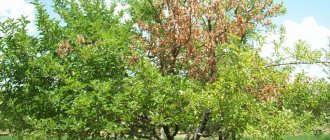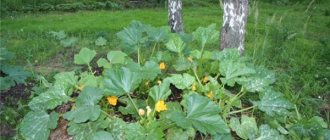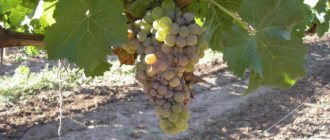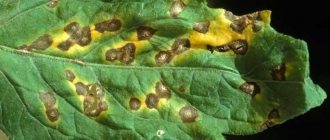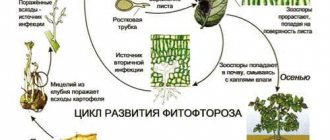Sweet corn is an annual heat-loving crop that loves moisture and humus-rich soils. This is a very tasty and healthy cereal that is quite easy to grow.
Unfortunately, like many other plants, corn is susceptible to various diseases, which are common in Ukraine. Every year, corn is affected by smut, fusarium, root rot, etc. Among the pests, the corn borer, Swedish flies, aphids and cutworms cause great damage to corn. They cause significant damage to crops, the total yield can be reduced by 30-35%.
In this article we will tell you what diseases and pests of corn can be encountered during its cultivation and how to combat them using agrotechnical, biological and chemical methods.
General preventive measures to prevent diseases and pests on sweet corn
- Crop rotation. Corn can be returned to the same field no earlier than after 3-4 years.
- Digging the soil after harvesting the predecessor to a depth of 20-25 cm.
- Removing plant debris from the site.
- Selection of corn seeds with resistance to various diseases.
- Weed control in the garden (especially clover, white pigweed, bindweed, quinoa and plantain).
- Sowing seeds at the optimal time (soil temperature should be at least +10° C).
- If the seeds for sowing have not been pre-treated, they need to be treated with special fungicides and insecticides.
- Do not exceed the depth of sowing seeds. The optimal sowing depth for corn is 4-6 cm.
- Selection of acceptable harvest dates (late crops are more often affected by helminthosporium).
- Lack of beneficial microelements in the soil causes sweet corn to lag in growth and become susceptible to disease and insect damage.
- Inter-row tillage during the growing season.
- Disinfection of work equipment.
- Optimal seed storage conditions. Temperatures below -18° C are considered favorable.
- Controlling corn pests to reduce the spread of diseases.
Red cob rot - Fusarium graminearum Schwabe
The disease is common in temperate corn growing areas. The fungus is known as a parasite of other cereals. It affects wheat, causing diseases of the ear (drunk bread), rot of seedlings, root collar and roots.
Seeds affected by the disease acquire a brick-red color, become fragile, with voids that are filled with a plexus of mycelium. At high humidity, a bright pink coating of fungal sporulation forms on the surface of such seeds. The affected grains mostly do not sprout and are completely destroyed, and the affected cobs are not stored - they quickly become moldy. An affected grain with an intact embryo can produce sprouts, but they turn black during the period between the formation of primary and secondary roots and soon die.
The first signs of the disease are observed in the phase of milky-waxy seed ripeness. A coating of mycelium appears on the cobs. The mycelium tightly penetrates the wrappers of the affected heads of cabbage, causing them to stick to each other and to the cob and giving them a characteristic red color, by which the disease is easily diagnosed. Signs of damage may also appear on plant stems. The lower internode softens and becomes first reddish-brown, then dark brown. Inside the stems, the affected tissues become pink or red, and the core of the stems becomes macerated.
The development of the disease begins from the top of the cob, on which a dense, bright pink coating of mycelium forms, which gradually spreads from top to bottom and often completely covers the entire cob. Prolonged wet weather and moderate temperatures during the period of cob ripening contribute to the development of the disease, especially in years with significant precipitation in the second half of summer and autumn.
It differs from Fusarium cob rot, caused by Fusarium verticillioides, in that the development of the disease affects the entire cob, and not its individual parts. Infection of an ear with a pathogen does not depend on the presence of mechanical damage caused by pests. Due to its high aggressiveness, it is able to independently and quickly colonize and penetrate healthy grains. The sources of infection are the remains of corn, which overwinter in the field and in which fruiting bodies with ascospores ripen by spring. These spores are carried by air currents to the stems and ears of plants, causing infection. In summer, the spread of the disease also occurs through conidial sporulation. Mycellium and conidia remain viable in the soil for a year, ascospores in perithecia for more than two years.
Biological preparations for controlling diseases and pests of sweet corn
| Drug name | Harmful organism against which treatment is carried out | Consumption rate | Packaging |
| Aktofit k.e. (aversectin C, 0.2%) | Fall armyworm | 50-200 ml per 20 liters of water | 0.04 l, 0.1 l, 0.2 l, 0.4 l, 0.9 l |
| Bitoxibacillin, e.g. | Fall armyworm | 80-100 ml per 10 liters of water | 35 ml, 0.125 l, 1 l, 5 l, 10 |
| Boverin | Wireworm | 0.2-0.5 l per 10 l of water | 1 l, 200 g |
| Metarizin | Wireworm | 100 ml per 10 liters of water | 1 l, 5 l |
Root aphid
Most often it manifests itself in dry, hot weather. The pest damages plant tissues, causing them to slow down their growth, and in case of massive infestation, they die (Figure 7). Weakened individuals are susceptible to infection by fungi.
To combat the pest, insecticides and fungicides are used, alternating them during the growing season.
Figure 7. Culture after infection by root aphids
Protectants for the prevention of diseases and pests on corn
| Name of the disinfectant | Disease or insect being treated | Consumption rate | Packaging |
| Alios, k.s. (triticonazole, 300 g/l) | Helminthosporiosis, seed molding, fusarium | 1.0-2.0 l/t | 10 l |
| Antikhrushch, k.s. (imidacloprid, 100 g/l + bifenthrin, 100 g/l) | Larvae of beetles, wireworms, cutworms, pests of seedlings | 5 l/t | 10 ml, 30 ml, 150 ml, 1 l, 5 l |
| Ventsedor, t.k.s. (tebuconazole, 25 g/l + thiram, 400 g/l) | Dusty and blister smut, fusarium root and basal rot, molding of seeds | 1.2 l/t | 1 l |
| Viking, v.s.k. (carboxin, 200 g/l + thiram, 200 g/l) | Dusty and blister smut, stem rot, seed mold | 2.5-3.0 l/t | 20 l |
| Vitavax 200 FF, v.s.k. (carboxin, 200 g/l+thiram, 200 g/l) | Dusty and blister smut, stem rot, molding of seeds | 2.5-3.0 l/t | 20 l |
| Gaucho 600, s.m. (imidacloprid, 600 g/kg) | Complex of soil pests | 5-7 l/t | 1 l |
| Inshur Perform, r.k. (triticonazole, 80 g/l + pyraclostrobin, 40 g/l) | Root rot, smut, fusarium | 0.5 l/t | 5 l |
| Cariolis, because (fludioxonil, 25 g/l + metalaxyl-m, 10 g/l) | Root, stem rot, seed mold | 1 l/t | 5 l |
| Cruiser, c.s. (350 g/l thiamethoxam) | Wireworm and Swedish fly larvae | 5.3 l/t | 1 l, 5 l |
| Maxim 025 FS, t.c.s. (fludioxanil, 25 g/l) | Root and stem rots | 1 l/t | 100 ml, 5 l |
| Maxim XL 035 FS, because with. (25 g/l fludioxonil, metalaxylu-M) | Root and stem rot, molding of seeds | 1 l/t | 5 l |
| Redigo M t.k.s. (prothioconazole, 100 g/l + metalaxyl, 20 g/l) | Dusty and blister smut, root and stem rots, molding of seeds | 0.8-1 l/t | 5 l |
| Royalflo 480, c.s. (thiram, 480 g/l) | Dusty and blister smut, stem rot, seed mold | 2.5-3.0 l/t | 20 l |
| Tirade s.k. (thiram, 400 g/l + difenoconazole, 30 g/l) | Bladder smut, root and stem rot, molding of seeds | 10 l/t | 10 l |
| TMTD, c.s. (thiram, 400 g/l) | Seed mold, fusarium blight, bacteriosis, bubbly smut, root and stem rot | 4 l/t | 10 l |
| Force 200 ZEA, t.c.s. (thiamethoxam, 200 g/l + tefluthrin, 80 g/l) | Complex of soil pests | 5-6 l/t | 20 l |
| Exor, because (thiamethoxam, 600 g/l) | Complex of soil pests | 4.5 l/t | 5 l |
What is bollworm
The cotton bollworm (lat. Helicoverpa armigera) is a butterfly of the moth family.
The emergence of overwintered adults begins at +18… +20 ºС. The summer periods of butterflies of subsequent generations overlap, so that the cotton bollworm can be found until October-November.
Active at dusk and at night, feeding on nectar.
The damage is caused by caterpillars of winged insects that eat crops. Cotton, corn, tomatoes, soybeans, peas and others are under attack. In the southern regions of Russia, the cotton bollworm has become the second most important pest of corn.
The distribution area includes southern Europe, the Caucasus, Central Asia, tropical and subtropical regions of the world.
How it looks and develops
The size of adult sexually mature individuals (imago) ranges from 10 to 20 mm. Wingspan 30-40 mm. The forewings are grayish-yellow with shades of red, pink, greenish, with two fuzzy dark gray spots. The hind wings are paler, with a brown stripe along the outer edge and a curved spot in the middle. Females have darker wing color than males.
The adult moth lives 20-40 days. During this time, females manage to lay from 500 to 1000 eggs.
The eggs, reaching a diameter of 0.5-0.6 mm, have a characteristic rounded ribbed shape. The color changes from white to green as it develops. They are deposited one at a time, less often 2-3 on leaves, drooping parts of the stem, threads of cobs, panicles.
The duration of embryo growth is from two to four days in summer, spring and autumn - up to 12 days.
The larvae (caterpillars) are colored light green, yellow or red-brown and covered with small spines. There are three wide dark lines along the body. There is a yellow stripe on the side under the spiracle.
The larvae develop in 13-22 days and go through 6 growth stages. On the last of them, the caterpillars reach a length of 35-40 mm.
The larvae pupate in the soil at a depth of 4-10 cm or in corn cobs. The pupa is red-brown in color, 15-22 mm long, with two parallel processes located at the narrowed end. Develops within 10-15 days.
Fungicides for controlling diseases of sweet corn
| Fungicide name | Disease against which treatment is carried out | Consumption rate | Packaging |
| Abacus, S.E. (pyraclostrobin, 62.5 g/l + epoxiconazole, 62.5 g/l) | Fusarium, rust, helminthosporium | 1.5-1.75 l/ha | 10 l |
| Acanto plus, c.s. (picoxystrobin, 200 g/l + cyproconazole, 80 g/l) | Helminthosporiosis, rust | 0,75-1,0 | 5 l |
| Amistar Extra, c.s. (cyproconazole, 50 g/l + azoxystrobin, 200 g/l) | Root and stem rots, helminthosporiasis | 0.5–1.0 l/ha | 5 l |
| Jenfield BT, Ph.D. (pyraclostrobin, 300 g/l) | Fusarium, rust, helminthosporium | 0.3-0.4 l/ha | 1 l, 5 l |
| Coronet 300, HP (trifloxystrobin 100 g/l, tebuconazole 200 g/l) | Rust and helminthosporiosis | 0.6-0.8 l/ha | 10 ml, 5 l |
| Retengo, Ph.D. (pyraclostrobin, 200 g/l) | Helminthosporiosis, rust, fusarium | 0.5 l/ha | 10 l |
| Teiser, Ph.D. (azoxystrobin, 250 g/l) | Rust, leaf rust, helminthosporiosis, fusarium | 0.5 – 1 l/ha | 10 l |
Stem borer
Less common but harmful are such diseases of corn.
Septoria blight has become widespread in the farms of Zhitomir, Kyiv, Nikolaev, Poltava, Kharkov, Kherson, Cherkasy regions on 0.2-7% of the surveyed areas affected by 0.5-8% of plants in the Steppe. In general, the disease developed at the average long-term level.
Minor manifestations of maize Alternaria blight disease were noted in the Ternopil region. It can cause leaf necrosis and, during epiphytoty years, lead to grain losses of 12 to 32%. In corn crops in 2015, the manifestation of the disease was facilitated by elevated air temperatures and long periods of heavy dew.
An average of 5.1-12% of affected plants was found on 28% of the crop area. Since the infection persists both on seeds and on plant debris and can be spread in the spring by wind, rain and insects to young plants, in 2017 we can assume the manifestation, and at elevated air temperatures and sufficient moisture, the spread of Alternaria in weakened corn crops .
Cephalosporiosis was harmful, which in the early stages affects weakened plants. Blackening of the vascular bundles, or cephalosporiosis, is common wherever corn is grown as a monoculture. Appears after flowering - with milky ripeness of grain on 1-3% of plants. Vegetative organs acquire a red-purple color, sometimes brown, and plants often form seeds. Due to the blockage of fungal spores, the conductive bundles of the stem in the section have a dark color, and the metabolism in the plant is disrupted.
Mold of germinating seeds and seedlings was everywhere. In all corn growing zones, 0.2-2% of affected plants were noted, lower than the level of previous years. In the private sector of the Kharkov region, places were observed with damage to up to 12% of seeds and seedlings with significant damage to them by soil pests. Fusarium type of mold predominated.
In 2017, the disease will develop everywhere under conditions of sowing in unheated soil, a long period of cool weather after sowing, poor soil and seed preparation, and the formation of a soil crust during germination. Effectively combats mold by inlaying corn seeds with tank mixtures of disinfectants with biologically active substances, growing cold-resistant hybrids, sowing in soil heated to 10...12 °C at a depth of 10 cm and pre-emergence harrowing of crops.
Root and stem rots appeared during the germination period - 2-3 pairs of true leaves in the form of rotting of the roots of the seedlings and the lower part of the stem in the phase of full ripeness of corn. Thanks to warm, humid weather, the disease did not spread on corn (it was observed on 0.6% of plants). In cells on early crops in the Kirovograd, Ternopil and Cherkassy regions, plant damage reached 2.4%.
An increase in the development of root and stem rots was observed in the phase of milky-waxy corn ripeness. High air temperatures in summer contributed to accelerated ripening of corn and significantly reduced the duration of the disease. In the full ripeness phase, the number of affected plants was 0-7%, which is six times less than last year, and the areas affected by the corn disease were three times less.
In the Donetsk, Kirovograd, Luhansk, and Kherson regions, the infestation of plants was insignificant - 0.5%, in the Forest-steppe - 0-7% (Kiev, Ternopil regions), in Polesie in the Transcarpathian, Volyn, Ivano-Frankivsk and Lviv regions - 0. 7-3%. The maximum number - 8-12% - of affected plants in the outbreaks of the Kirovograd and Kharkov regions. The Fusarium type of rot dominated everywhere.
Now the disease is in depression, but after “comfort” gradual growth is possible. In 2016, root and stem rots will appear mainly in the Steppe and Forest-Steppe, in certain areas of Polesie, with a lack of moisture during the period of greatest water consumption of corn, starting from the phase of 7-8 leaves and in milky ripeness.
The harmfulness of the disease is limited by growing hybrids resistant to root and stem rot, chopping and plowing crop residues, sowing inlaid seeds at the optimal time, in well-prepared and fertilized soil, destroying the soil crust in the pre-emergence period, and timely harvesting.
This parasite lives in the steppe and forest-steppe zones of Ukraine and Russia. Under favorable conditions, these insects can produce up to 3 generations per year. Particular harm to plants is caused by caterpillars, which damage all parts of the crop, including stems, panicles and cobs.
Pests begin to pupate in the middle or end of spring, when the air temperature rises to around 15 degrees. The flight of butterflies coincides with the throwing out of panicles on corn. During this period, insects begin to lay eggs at the bottom of the leaves, 400 eggs per nest. After hatching from the eggs, the caterpillars begin to actively feed on plant cells; they gnaw tunnels in the stems and cobs, as well as on the panicles.
The first signs of damage are yellowing of stems and leaves. The threshold of harmfulness is considered to be the placement of 5-6 caterpillars per square meter of field. Intensive development of parasites leads to breaking of stalks and heads of corn in windy weather.
Description
The body surface of the stem moth caterpillar is yellow with a gray tint; there is a dark stripe on the back of these parasites. The butterflies are quite large, their wingspan reaches 3.5 centimeters. In females, the front wings are white with a yellowish tint or brown, the hind wings are light. The wings of male moths are grayish or brown.
Fighting methods
Low cutting of corn stalks during harvesting, as well as deep plowing of the soil with plant debris, helps prevent the appearance of pests. You can also fight stem borer with special chemicals. For example, the Karate insecticide at a dosage of 200 grams of active substance per hectare of crops is used to treat corn plantings before butterflies lay eggs. Another way to prevent the appearance of parasites is to use resistant varieties.
Found in regions with humid climates. Appears in the form of dark spots on the lower part of the stem or near the internodes (Figure 4). When the stem is damaged, it begins to soften, soon rots and dies.
Figure 4. Stem rot on crops
The stem rot fungus overwinters well on plant debris and begins to infect new plants in the spring.
This disease leads to a deterioration in appearance, making plants fragile and brittle. To prevent the disease, you need to treat the seeds with fungicides, fertilize the soil and observe crop rotation.
Insecticides for pest control of sweet corn
| Name of insecticide | Pest against which treatment is carried out | Consumption rate | Packaging |
| Bazudin, s.p. (diazinon - 40%) | Soil pests | 20 g per sq.m. | 20 g |
| Borey, K.S. (imidacloprid 150 g/l, lambda-cyhalothrin 50 g/l) | Corn stem borer | 0,12 — 0,14 | 5 l |
| Dimilin, s.p. (diflubenzuron, 250 g/kg) | Fall armyworm, locust | 0.09-0.12 kg/ha | 1 kg |
| Karate 050 Zeon, m.v.s. (lambda-cyhalothrin, 50 g/l) | Corn stem borer, western corn rootworm | 0.2–0.3 l/ha | 250 ml, 5 l |
| Koragen 20, k.s. (chlorantriniliprole, 200 g/l) | Corn stem borer, armyworm | 100-150 ml/ha | 1.2 ml, 50 ml, 200 ml, 1 l, 5 l |
| Nurel D, Ph.D. (chlorpyrifos, 500 g/l+cypenrmethrin, 50 g/l) | Aphids, flies, soil pests | 0,8-1,2 | 7 ml, 5 l |
| Provanto Edema (Proteus) m.d. (thiacloprid, 100 g/l + deltamethrin, 10 g/l) | Stem and meadow moths, cutworms | 0.5-1 l/ha | 14 ml, 50 ml, 500 ml, 5 l |
| Regent, g. (fipronil, 20 g/kg) | Complex of soil pests | 5.0-10.0 kg/ha | 10 kg |
| Turbo Presto, c.s. (clothianidin 200 g/l + lambda-cyhalothrin 100 g/l) | Corn stem borer, aphids, grain flies | 2-3ml per 5-7l of water per hundred square meters | 3 ml, 15 ml, 45 ml, 500 ml |
If you find an error, please select a piece of text and press Ctrl+Enter.
Gray beet weevil
Gray beet weevil
Order: Coleoptera. Family: weevils. Alternative title:
Tanymecus palliatus.
The gray beet weevil damages beets, legumes, corn, and sunflowers. The pest is widespread in all regions except the Far East.
The best time for weevil development is hot and dry spring. The most comfortable living conditions are a temperature of +15 - +30°C and an air humidity of 65%. If the thermometer shows less than +5°C, the pests will die. Gray beet weevils lead a secretive lifestyle. At night or at low temperatures, the beetles burrow into the upper layers of the soil.
Read more about gray beet weevils
Dusty smut
A disease of fungal origin affects already formed corn plants that have entered the cob formation phase.
The corn panicle becomes covered with a black mass, any touch of which leads to the spread of fungal spores around it.
The corn cob dries out and turns black. Plants that have been infected begin to bush and, accordingly, develop worse.
Insufficient watering and soil compaction create a fertile environment for the development of the disease.
To combat loose smut, the soil must be regularly disinfected, loosened and moistened.
Soil preparation before sowing consists of treating with fungicides. The most effective drugs today are Ditox, Granivit or Vitavax.
Southern helminthosporiosis
The disease can be recognized by the characteristic yellow-gray oblong spots on the leaves of adult plants.
Corn kernels become black around the embryo and, accordingly, lose their germination capacity. Wet weather especially increases the risk of damage to corn.
Selecting infection-resistant varieties for sowing is the key to success. Harvesting must be done on time, after which the stems must be destroyed. By winter, the soil is dug deep.
Planting seeds in the spring should be done as early as possible. Potassium-phosphorus fertilizers and compliance with crop rotation in a specific area also help in the fight against corn infection.
Fusarium
This fungal disease manifests itself by the formation of a pink fungal coating on the germinating seed.
In order to prevent the disease for sowing, it is necessary to select healthy seeds of corn varieties resistant to infection, and before planting, disinfect the seed material with complex fungicides, for example, Vitavax 200, Granivit, Maxim XL035 FS.
The planted soil should be watered generously to allow the corn to germinate while the antifungal drug is in effect.
